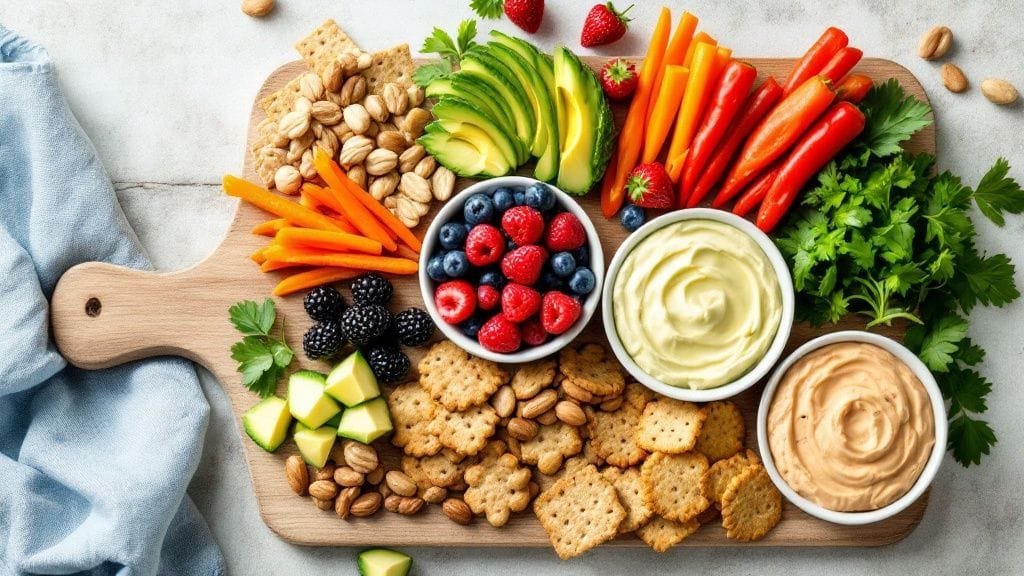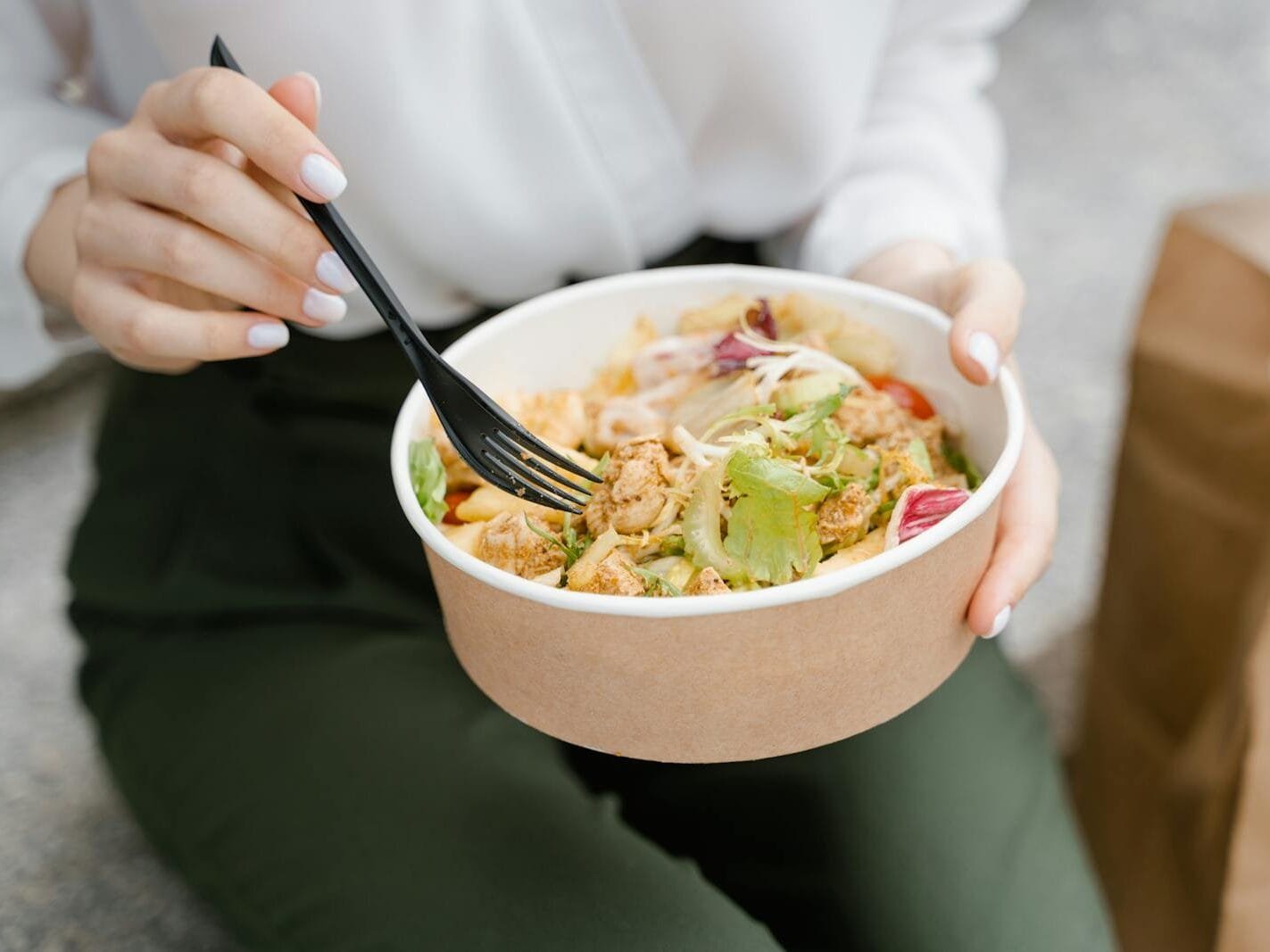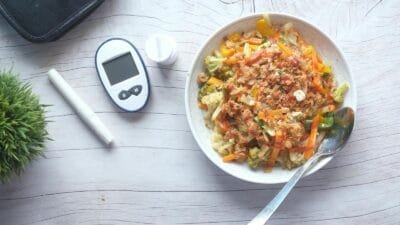Living with type 2 diabetes requires careful attention to diet, but it absolutely doesn’t mean sacrificing delicious meals or spending hours in the kitchen. In fact, embracing a diabetic-friendly diet can be a journey of culinary discovery, opening doors to fresh, flavorful, and incredibly satisfying foods. The key is understanding the principles of healthy eating for diabetes and learning how to create quick, easy meals that keep your blood sugar levels stable and your taste buds happy. Forget restrictive and bland – we’re talking about vibrant, accessible recipes that fit seamlessly into your busy life and empower you to take control of your health, one delicious bite at a time.
Imagine a life where managing your type 2 diabetes through diet feels less like a chore and more like a natural, enjoyable part of your day. This isn’t just wishful thinking – it’s entirely achievable with the right knowledge and a collection of go-to easy meal ideas. This article is your comprehensive guide to navigating the world of diabetic-friendly cooking without the overwhelm.
We’ll break down the essential dietary guidelines, offer practical tips for meal planning and preparation, and most importantly, provide you with a treasure trove of simple, scrumptious recipes that are perfect for breakfast, lunch, dinner, and even those between-meal cravings. Get ready to transform your approach to eating and discover how easy and enjoyable diabetic-friendly meals can truly be.
This article is designed to be your ultimate resource for crafting easy and delightful meals that are specifically tailored for individuals with type 2 diabetes. We understand that managing diabetes can feel like a constant juggling act, especially when it comes to food. That’s why we’re cutting through the confusion and providing you with clear, actionable advice and recipes that prioritize simplicity, flavor, and blood sugar management.
Whether you’re a seasoned cook or a kitchen novice, you’ll find valuable insights and inspiration here to build a repertoire of easy meals that nourish your body, satisfy your palate, and make living well with type 2 diabetes both attainable and genuinely delicious. Let’s embark on this culinary journey together and unlock the secrets to easy, healthy, and mouthwatering meals for type 2 diabetes.

Understanding the Essentials of Diabetic-Friendly Eating
Managing type 2 diabetes effectively hinges significantly on adopting a healthy eating plan. It’s not about deprivation or blandness; instead, it’s about making informed food choices that help regulate blood sugar levels, manage weight, and reduce the risk of diabetes-related complications. Understanding the core principles of a diabetic-friendly diet is the first step toward creating easy and delicious meals that support your health goals.
Key Dietary Principles for Type 2 Diabetes
At the heart of diabetic-friendly eating are several fundamental principles. These guidelines aren’t rigid rules but rather flexible frameworks that empower you to make healthy food choices consistently.
- Focus on Whole Foods: Prioritize whole, unprocessed foods like fruits, vegetables, whole grains, lean proteins, and healthy fats. These foods are nutrient-dense and naturally lower in added sugars and unhealthy fats.
- Control Carbohydrate Intake: Carbohydrates have the most significant impact on blood sugar levels. Choose complex carbohydrates like whole grains, legumes, and non-starchy vegetables over refined carbohydrates such as white bread, sugary drinks, and processed snacks. Be mindful of portion sizes.
- Embrace Fiber-Rich Foods: Fiber plays a crucial role in slowing down sugar absorption, helping to stabilize blood sugar levels. Excellent sources of fiber include vegetables, fruits, whole grains, and legumes.
- Choose Lean Proteins: Lean protein sources like fish, poultry without skin, beans, lentils, and tofu are essential for satiety and muscle maintenance without significantly impacting blood sugar.
- Incorporate Healthy Fats: Healthy fats, such as those found in avocados, nuts, seeds, and olive oil, are beneficial for heart health and can aid in satiety. However, remember to consume them in moderation as they are calorie-dense.
- Limit Added Sugars and Processed Foods: Foods high in added sugars and heavily processed foods can cause rapid spikes in blood sugar and are often low in nutritional value. Minimize your intake of sugary drinks, candies, pastries, and processed snacks.
- Portion Control is Key: Even healthy foods can impact blood sugar if consumed in excessive quantities. Be mindful of portion sizes to maintain stable glucose levels and manage weight.
- Hydration Matters: Drink plenty of water throughout the day. Water helps flush out excess sugar and keeps you feeling full, preventing overeating.
Building Blocks of Easy Diabetic Meals
Creating easy meals for type 2 diabetes revolves around combining the right building blocks. Think of constructing your plate with a balanced mix of these components at each meal:
- Non-Starchy Vegetables: These should make up a significant portion of your plate. Examples include broccoli, spinach, kale, peppers, tomatoes, cucumbers, and carrots. They are low in calories and carbohydrates but high in fiber and nutrients.
- Lean Protein: Choose a source of lean protein to aid satiety and muscle health. Options include grilled chicken or fish, tofu, beans, lentils, or lean cuts of beef or pork in moderation.
- Healthy Fats: Add a small serving of healthy fats for flavor and satiety. This could be a drizzle of olive oil, a quarter of an avocado, a handful of nuts, or seeds.
- Smart Carbohydrates (in moderation): Include a controlled portion of complex carbohydrates if desired. Opt for whole grains like quinoa, brown rice, oats, or whole-wheat bread or pasta. Legumes such as beans and lentils also fit into this category.
By focusing on these food groups and applying the dietary principles, you can effortlessly create a wide variety of delicious and easy meals that are perfectly suited for managing type 2 diabetes.
Breakfast: Starting Your Day Right with Easy & Diabetic-Friendly Options

Breakfast is often touted as the most important meal of the day, and for individuals with type 2 diabetes, it sets the tone for blood sugar management throughout the day. Skipping breakfast can lead to blood sugar fluctuations and increased hunger later on. Thankfully, there are numerous easy and delicious diabetic-friendly breakfast options that are quick to prepare and keep you feeling energized and satisfied.
Quick & Healthy Breakfast Ideas for Type 2 Diabetes
Here are some simple and nutritious breakfast ideas perfect for busy mornings:
- Overnight Oats: Prepare these the night before for a grab-and-go breakfast. Combine rolled oats, milk (dairy or unsweetened plant-based), chia seeds, and your favorite diabetic-friendly toppings (berries, nuts, seeds, a sprinkle of cinnamon) in a jar or container. Let it sit in the refrigerator overnight.
- Example Recipe: Mix 1/2 cup rolled oats, 1 cup unsweetened almond milk, 1 tablespoon chia seeds, 1/4 cup blueberries, and a few almonds.
- Greek Yogurt with Berries and Nuts: Plain Greek yogurt is packed with protein and low in carbohydrates. Top it with a serving of berries (strawberries, blueberries, raspberries) for sweetness and antioxidants, and a sprinkle of nuts for healthy fats and crunch.
- Example Recipe: 1 cup plain Greek yogurt, 1/2 cup mixed berries, 1 tablespoon chopped walnuts.
- Scrambled Eggs with Vegetables: Eggs are a protein powerhouse and versatile. Scramble them with non-starchy vegetables like spinach, mushrooms, onions, or peppers for a filling and nutritious breakfast.
- Example Recipe: 2 eggs scrambled with 1/2 cup spinach and 1/4 cup chopped bell peppers. Add a sprinkle of cheese if desired.
- Whole-Wheat Toast with Avocado and Egg: Opt for whole-wheat toast over white bread. Top it with mashed avocado for healthy fats and a protein-rich egg (fried, poached, or scrambled).
- Example Recipe: 1 slice whole-wheat toast, 1/4 avocado mashed, 1 poached egg.
- Smoothie with Protein and Greens: Blend together unsweetened milk or water, protein powder (whey, soy, or plant-based), spinach or kale, a small amount of fruit (berries or half a banana), and healthy fats (avocado or nut butter).
- Example Recipe: 1 cup unsweetened almond milk, 1 scoop vanilla protein powder, 1 cup spinach, 1/4 cup blueberries, 1 tablespoon almond butter.
Table: Nutritional Comparison of Easy Diabetic Breakfast Options
| Breakfast Option | Approx. Calories | Approx. Net Carbs | Approx. Protein | Key Nutrients |
| Overnight Oats (Example Recipe) | ~300 | ~35g | ~15g | Fiber, Omega-3s, Antioxidants |
| Greek Yogurt with Berries & Nuts | ~250 | ~15g | ~25g | Protein, Calcium, Probiotics, Antioxidants |
| Scrambled Eggs with Vegetables | ~200 | ~5g | ~15g | Protein, Vitamins (A, D, B12), Minerals (Iron) |
| Whole-Wheat Toast with Avocado & Egg | ~280 | ~20g | ~12g | Fiber, Healthy Fats, Protein, Folate |
| Smoothie with Protein & Greens | ~350 | ~25g | ~30g | Protein, Fiber, Vitamins, Minerals |
Note: Nutritional values are approximate and can vary based on specific ingredients and portion sizes.
Tips for Making Breakfast Diabetic-Friendly
- Prioritize Protein and Fiber: These nutrients help slow down digestion and keep you feeling fuller for longer, preventing blood sugar spikes.
- Limit Sugary Cereals and Pastries: These are high in refined carbohydrates and added sugars, which can rapidly elevate blood sugar levels.
- Choose Whole Grains Over Refined Grains: Opt for whole-wheat bread, oats, and other whole grains over white bread, sugary cereals, and pastries.
- Use Unsweetened Dairy or Plant-Based Milks: Choose plain Greek yogurt and unsweetened almond, soy, or oat milk to minimize added sugars.
- Add Healthy Fats: Include avocado, nuts, seeds, or nut butter in moderation for healthy fats that contribute to satiety and overall health.
By incorporating these easy and diabetic-friendly breakfast ideas and tips into your morning routine, you can start your day on a healthy note and effectively manage your blood sugar levels.
Lunch: Simple and Satisfying Midday Meals for Blood Sugar Balance

Lunch often falls into the trap of being rushed or overlooked, but for individuals with type 2 diabetes, it’s another crucial opportunity to nourish your body and maintain stable blood sugar. Easy, portable, and diabetic-friendly lunch options are essential for staying on track, whether you’re at work, home, or on the go.
Quick & Portable Lunch Ideas for Type 2 Diabetes
Here are some convenient and nutritious lunch ideas that are easy to prepare and pack:
- Salad with Grilled Chicken or Fish: A salad is a versatile and healthy lunch choice. Load it up with non-starchy vegetables (leafy greens, cucumbers, bell peppers, tomatoes), grilled chicken or fish for protein, and a light vinaigrette dressing.
- Example Recipe: Mixed greens, grilled chicken breast (4 oz), cucumber, bell pepper, cherry tomatoes, 2 tablespoons olive oil and vinegar dressing.
- Lentil Soup: Lentil soup is packed with fiber and protein, making it a filling and blood-sugar-friendly option. Prepare a large batch on the weekend for easy lunches throughout the week.
- Example Recipe (Simplified): Sauté onions, carrots, and celery. Add lentils, vegetable broth, and spices (cumin, coriander). Simmer until lentils are tender.
- Turkey or Chicken Lettuce Wraps: Skip the bread and use lettuce leaves as wraps. Fill them with lean ground turkey or chicken cooked with vegetables and flavorful seasonings.
- Example Recipe: Ground turkey or chicken sautéed with diced onions, bell peppers, and water chestnuts. Season with soy sauce (low sodium), ginger, and garlic. Spoon into lettuce cups.
- Quinoa Salad with Roasted Vegetables and Chickpeas: Quinoa is a complete protein and whole grain. Combine it with roasted non-starchy vegetables (broccoli, cauliflower, zucchini) and chickpeas for a plant-based and fiber-rich lunch.
- Example Recipe: Cooked quinoa, roasted broccoli, cauliflower, zucchini, chickpeas, lemon juice, olive oil, herbs.
- Leftovers from Dinner: Don’t underestimate the convenience of leftovers! Portion out a healthy serving of dinner from the night before for a quick and easy lunch.
Table: Nutritional Comparison of Easy Diabetic Lunch Options
| Lunch Option | Approx. Calories | Approx. Net Carbs | Approx. Protein | Key Nutrients |
| Salad with Grilled Chicken or Fish | ~350 | ~15g | ~30g | Protein, Fiber, Vitamins, Minerals, Healthy Fats |
| Lentil Soup (Example Recipe) | ~300 | ~40g | ~18g | Fiber, Protein, Iron, Folate |
| Turkey or Chicken Lettuce Wraps | ~250 | ~10g | ~25g | Protein, Vitamins, Minerals |
| Quinoa Salad with Roasted Vegetables & Chickpeas | ~400 | ~50g | ~15g | Fiber, Protein, Complex Carbs, Vitamins, Minerals |
| Leftovers from Dinner (Varies) | Varies | Varies | Varies | Varies depending on the dinner meal |
Note: Nutritional values are approximate and can vary based on specific ingredients and portion sizes.
Tips for Packing a Diabetic-Friendly Lunch
- Plan Ahead: Take some time on the weekend or in the evening to plan your lunches for the week. This makes it easier to prepare and pack healthy options.
- Utilize Leftovers: Cooking extra portions at dinner can provide you with convenient and healthy lunches for the next day.
- Invest in Reusable Containers: Having a good set of reusable containers makes packing lunches easier and more environmentally friendly.
- Prepare Components in Advance: Wash and chop vegetables, cook grains, and prepare protein sources in advance to streamline lunch preparation during the week.
- Choose Portable Options: Soups, salads in jars, wraps, and grain bowls are all easy to transport and eat on the go.
By incorporating these quick and portable lunch ideas and tips, you can enjoy satisfying midday meals that support your blood sugar management and keep you energized throughout the afternoon.
Dinner: Delicious and Simple Evening Meals for Type 2 Diabetes

Dinner is often the meal we look forward to the most, and for individuals with type 2 diabetes, it can still be a delightful and satisfying experience. The key is to choose recipes that are both flavorful and blood-sugar-friendly, and that are also easy to prepare after a long day.
Easy & Flavorful Dinner Recipes for Type 2 Diabetes
Here are some delicious and simple dinner recipes that are perfect for managing type 2 diabetes:
- Baked Salmon with Roasted Vegetables: Salmon is rich in omega-3 fatty acids and lean protein. Pair it with roasted non-starchy vegetables like broccoli, asparagus, bell peppers, and onions for a complete and nutritious meal.
- Example Recipe: Season salmon fillets with lemon juice, herbs, and spices. Roast alongside chopped broccoli, bell peppers, and onions until salmon is cooked through and vegetables are tender.
- Chicken Stir-Fry with Brown Rice: Stir-fries are quick and versatile. Use lean chicken breast, plenty of non-starchy vegetables (broccoli, carrots, snap peas, mushrooms), and a low-sodium soy sauce-based sauce. Serve over a small portion of brown rice.
- Example Recipe: Stir-fry chicken breast strips with broccoli, carrots, snap peas, and mushrooms. Sauce: low-sodium soy sauce, ginger, garlic, a touch of cornstarch for thickening. Serve over 1/2 cup cooked brown rice.
- Turkey Meatloaf with Mashed Cauliflower: A healthier twist on classic meatloaf. Use lean ground turkey and load it with vegetables. Serve with mashed cauliflower instead of mashed potatoes for a lower-carbohydrate side dish.
- Example Recipe: Turkey meatloaf made with lean ground turkey, chopped onions, bell peppers, carrots, and rolled oats instead of breadcrumbs. Mashed cauliflower: steamed cauliflower mashed with a bit of milk (dairy or plant-based) and seasonings.
- Sheet Pan Chicken and Vegetables: Sheet pan meals are incredibly easy and require minimal cleanup. Toss chicken pieces and chopped non-starchy vegetables (broccoli, Brussels sprouts, sweet potatoes in moderation) with olive oil, herbs, and spices. Roast on a sheet pan until cooked.
- Example Recipe: Sheet pan with chicken thighs or breasts, broccoli florets, Brussels sprouts, and cubed sweet potatoes (small portion). Toss with olive oil, rosemary, thyme, salt, and pepper.
- Vegetarian Chili with Beans and Vegetables: A hearty and flavorful vegetarian chili packed with beans, lentils, vegetables, and spices. Serve with a dollop of plain Greek yogurt or a sprinkle of cheese if desired.
- Example Recipe: Vegetarian chili with kidney beans, black beans, diced tomatoes, corn, bell peppers, onions, chili powder, cumin, and other spices.
Table: Nutritional Comparison of Easy Diabetic Dinner Options
| Dinner Option | Approx. Calories | Approx. Net Carbs | Approx. Protein | Key Nutrients |
| Baked Salmon with Roasted Vegetables | ~450 | ~20g | ~40g | Omega-3s, Protein, Vitamins, Minerals, Fiber |
| Chicken Stir-Fry with Brown Rice | ~400 | ~45g | ~35g | Protein, Vitamins, Minerals, Fiber |
| Turkey Meatloaf with Mashed Cauliflower | ~380 | ~25g | ~30g | Protein, Vitamins, Minerals, Fiber |
| Sheet Pan Chicken and Vegetables | ~420 | ~30g | ~35g | Protein, Vitamins, Minerals, Fiber |
| Vegetarian Chili with Beans and Vegetables | ~350 | ~50g | ~18g | Fiber, Protein, Iron, Folate, Vitamins, Minerals |
Note: Nutritional values are approximate and can vary based on specific ingredients and portion sizes.
Tips for Easy Diabetic-Friendly Dinners
- Focus on Lean Protein and Vegetables: Make these the stars of your dinner plate.
- Use Healthy Cooking Methods: Bake, grill, roast, or stir-fry instead of frying.
- Flavor with Herbs and Spices: Use herbs and spices liberally to add flavor without added salt or sugar.
- Control Portions of Carbohydrates: Be mindful of portion sizes for grains like rice, quinoa, or potatoes.
- Prepare Large Batches for Leftovers: Cooking larger portions can save time and provide you with easy lunches for the next day.
By incorporating these delicious and simple dinner recipes and tips into your evening routine, you can enjoy satisfying and healthy meals that support your blood sugar management and make dinnertime a pleasure.
Snacks: Smart & Satisfying Bites Between Meals for Type 2 Diabetes

Snacks often get a bad rap, but for individuals with type 2 diabetes, strategic snacking can be beneficial. Healthy snacks can help prevent blood sugar dips between meals, manage hunger, and provide a nutritional boost. The key is to choose snacks that are low in added sugars and refined carbohydrates and rich in fiber, protein, or healthy fats.
Smart Snack Choices for Type 2 Diabetes
Here are some smart and satisfying snack options that are perfect for managing blood sugar:
- Nuts and Seeds (Portion Controlled): Almonds, walnuts, pecans, chia seeds, flax seeds, and pumpkin seeds are excellent sources of healthy fats, fiber, and protein. Be mindful of portion sizes as they are calorie-dense.
- Example Snack: 1/4 cup almonds or a tablespoon of chia seeds in yogurt.
- Vegetables with Hummus: Non-starchy vegetables like carrots, celery, cucumber slices, and bell pepper strips are low in calories and carbohydrates and high in fiber. Hummus provides protein and healthy fats.
- Example Snack: Carrot sticks, celery sticks, and bell pepper strips with 2 tablespoons of hummus.
- Hard-Boiled Eggs: Eggs are a portable and protein-packed snack.
- Example Snack: 1-2 hard-boiled eggs.
- Cheese and Whole-Wheat Crackers (in moderation): Choose low-fat cheese and whole-wheat crackers in controlled portions for a satisfying snack with protein and fiber.
- Example Snack: 1 ounce of low-fat cheese and 4-5 whole-wheat crackers.
- Apple Slices with Peanut Butter (Natural): Apples provide fiber, and natural peanut butter (no added sugar) provides protein and healthy fats.
- Example Snack: 1 small apple sliced and 1 tablespoon natural peanut butter.
- Plain Greek Yogurt with Berries: As mentioned earlier, plain Greek yogurt is a protein powerhouse, and berries add sweetness and antioxidants.
Table: Nutritional Comparison of Smart Diabetic Snack Options
| Snack Option | Approx. Calories | Approx. Net Carbs | Approx. Protein | Key Nutrients |
| Nuts and Seeds (1/4 cup almonds) | ~170 | ~5g | ~6g | Healthy Fats, Fiber, Protein, Vitamin E, Magnesium |
| Vegetables with Hummus | ~150 | ~15g | ~5g | Fiber, Protein, Vitamins, Minerals |
| Hard-Boiled Eggs (2 eggs) | ~140 | ~1g | ~12g | Protein, Vitamins (A, D, B12), Minerals (Iron) |
| Cheese & Whole-Wheat Crackers | ~200 | ~15g | ~8g | Protein, Calcium, Fiber |
| Apple Slices with Peanut Butter | ~200 | ~20g | ~7g | Fiber, Protein, Healthy Fats, Vitamins |
| Plain Greek Yogurt with Berries (Example) | ~150 | ~10g | ~15g | Protein, Calcium, Probiotics, Antioxidants |
Note: Nutritional values are approximate and can vary based on specific ingredients and portion sizes.
Tips for Smart Diabetic Snacking
- Plan Your Snacks: Don’t wait until you’re starving to choose a snack. Plan healthy snacks to have on hand when hunger strikes between meals.
- Portion Control is Crucial: Even healthy snacks can contribute to weight gain and blood sugar fluctuations if consumed in large quantities. Stick to recommended serving sizes.
- Focus on Protein, Fiber, and Healthy Fats: These nutrients promote satiety and help stabilize blood sugar levels.
- Avoid Sugary and Processed Snacks: Steer clear of candies, pastries, sugary drinks, chips, and processed snacks, which can cause rapid blood sugar spikes.
- Listen to Your Body’s Hunger Cues: Snack when you’re genuinely hungry, not out of boredom or habit.
By incorporating these smart and satisfying snack options and tips into your routine, you can effectively manage hunger, prevent blood sugar dips, and maintain a healthy eating pattern throughout the day.
Meal Planning and Preparation: Making Easy Diabetic Meals a Reality
Consistency is key when it comes to managing type 2 diabetes through diet, and meal planning and preparation are your secret weapons for success. By taking some time to plan and prepare your meals in advance, you can ensure you always have healthy and diabetic-friendly options readily available, making it easier to stick to your dietary goals even on busy days.
Practical Tips for Meal Planning for Type 2 Diabetes
- Set Aside Time for Planning: Dedicate a specific time each week (e.g., Sunday afternoon) to plan your meals for the upcoming week.
- Create a Weekly Meal Plan: Outline your breakfast, lunch, dinner, and snack ideas for each day of the week. Use templates or apps to help you organize your plan.
- Incorporate Variety: Include a variety of foods from all food groups in your meal plan to ensure you’re getting a balanced intake of nutrients.
- Plan Around Your Schedule: Consider your schedule and commitments when planning meals. Choose quick and easy recipes for busy weeknights and save more elaborate meals for weekends.
- Check Your Pantry and Refrigerator: Before creating your meal plan, take stock of what you already have on hand to avoid food waste and make your grocery shopping more efficient.
- Create a Grocery List: Based on your meal plan, create a detailed grocery list of all the ingredients you’ll need. Organize your list by grocery store sections to make shopping easier.
- Involve Your Family: If you’re cooking for a family, involve them in the meal planning process. This can help ensure everyone is on board with healthy eating and reduce mealtime stress.
- Be Flexible: Life happens, and sometimes meal plans need to be adjusted. Don’t be afraid to swap meals or make substitutions as needed.
Streamlining Meal Preparation for Busy Schedules
- Batch Cooking: Cook large quantities of staple ingredients like grains (quinoa, brown rice), proteins (grilled chicken, roasted tofu), and soups or stews on the weekend. These can be used as building blocks for meals throughout the week.
- Prep Ingredients in Advance: Wash, chop, and store vegetables, and portion out proteins at the beginning of the week. This significantly reduces cooking time during busy weekdays.
- Utilize Time-Saving Appliances: Slow cookers, pressure cookers (Instant Pot), and air fryers can significantly speed up cooking times for certain meals.
- Embrace One-Pan or Sheet Pan Meals: These meals minimize cooking and cleanup time. Simply toss ingredients together on a pan and bake or roast.
- Utilize Leftovers Creatively: Don’t just reheat leftovers as is. Transform them into new meals. For example, leftover roasted chicken can be used in salads, soups, or wraps.
- Stock Your Pantry with Healthy Staples: Keep your pantry stocked with healthy staples like canned beans, lentils, whole grains, canned tomatoes, spices, and healthy oils. This ensures you always have ingredients on hand for quick and easy meals.
- Keep Easy Recipes Handy: Collect a repertoire of quick and easy diabetic-friendly recipes that you can rely on when time is limited. Bookmark websites, save recipes on apps, or create a recipe binder.
By incorporating these meal planning and preparation tips into your routine, you can make easy diabetic meals a consistent part of your life, reducing stress, improving your dietary adherence, and ultimately, better managing your type 2 diabetes.
FAQ: Common Questions About Easy Meals for Type 2 Diabetics
Q1: Can I eat fruit if I have type 2 diabetes?
Q2: Are potatoes off-limits for type 2 diabetes?
Q3: What are some healthy and easy swaps for sugary snacks and desserts?
Instead of Candy: Choose a small handful of nuts or seeds, a piece of dark chocolate (70% cocoa or higher), or berries with a dollop of plain Greek yogurt.
Instead of Ice Cream: Opt for frozen berries blended into a smoothie, a sugar-free popsicle, or baked apples with cinnamon.
Instead of Pastries and Cakes: Try whole-wheat muffins made with fruit and nuts (in moderation), chia seed pudding, or a small portion of fruit salad.
Q4: How can I make sure my meals are both diabetic-friendly and flavorful?
Q5: Is it necessary to completely eliminate carbohydrates from my diet if I have type 2 diabetes?

Embracing Easy and Delicious Diabetic-Friendly Meals for a Healthier Life
Managing type 2 diabetes through diet doesn’t have to be a daunting or restrictive experience. As we’ve explored, crafting easy and delicious meals that support blood sugar control is not only achievable but also opens up a world of flavorful and nutritious eating. By embracing the principles of diabetic-friendly eating, focusing on whole foods, controlling carbohydrate intake, and incorporating lean protein, healthy fats, and plenty of fiber, you can create a sustainable and enjoyable eating pattern.
The key takeaway is that easy meals for type 2 diabetics are about making smart choices, not sacrifices. With a little planning and preparation, and a repertoire of go-to recipes, you can effortlessly integrate healthy and delicious meals into your daily routine. From quick breakfast options to portable lunches, flavorful dinners, and smart snacks, the possibilities are endless. Remember to experiment with recipes, find flavors you love, and most importantly, be kind to yourself throughout this journey.
By making conscious food choices and embracing a lifestyle that prioritizes healthy eating, you are taking powerful steps towards managing your type 2 diabetes, improving your overall well-being, and enjoying a life filled with both good health and delicious food. Start small, be consistent, and celebrate your progress. Your journey to easy, healthy, and mouthwatering diabetic-friendly meals starts now!




